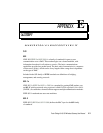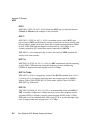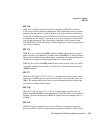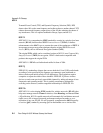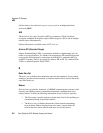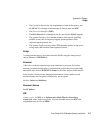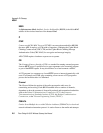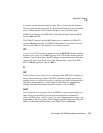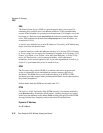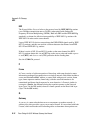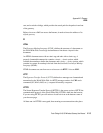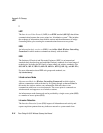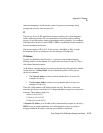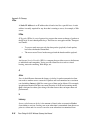Psion Teklogix 9160 G2 Wireless Gateway User Manual E-9
Appendix E: Glossary
CTS
to transmit a packet when the channel is quiet. When it detects that the channel is
idle, the station transmits the packet. If it detects that the channel is busy, the station
waits a random amount of time and then attempts to access the media again.
CSMA/CA is the basis of the IEEE 802.11e Distributed Control Function (DCF).
See also RTS and CTS.
The CSMA/CA protocol used by 802.11 networks is a variation on CSMA/CD
(used by Ethernet networks). In CSMA/CD the emphasis is on collision detection
whereas with CSMA/CA the emphasis is on collision avoidance.
CTS
A clear to send (CTS) message is a signal sent by an IEEE 802.11 client station in
response to an request to send (RTS) message. The CTS message indicates that the
channel is clear for the sender of the RTS message to begin data transfer. The other
stations will wait to keep the air waves clear. This message is a part of the IEEE
802.11 CSMA/CA protocol. (See also RTS.)
D
DCF
The Distribution Control Function is a component of the IEEE 802.11e Quality of
Service (QoS) technology standard. The DCF coordinates channel access among
multiple stations on a wireless network by controlling wait times for channel access.
Wait times are determined by a random backoff timer which is configurable by
defining minimum and maximum contention windows. See also EDCF.
DHCP
The Dynamic Host Configuration Protocol (DHCP) is a protocol specifying how a
central server can dynamically provide network configuration information to
clients. A DHCP server “offers” a “lease” (for a pre-configured period of time—see
Lease Time) to the client system. The information supplied includes the client's IP
addresses and netmask plus the address of its DNS servers and Gateway.



